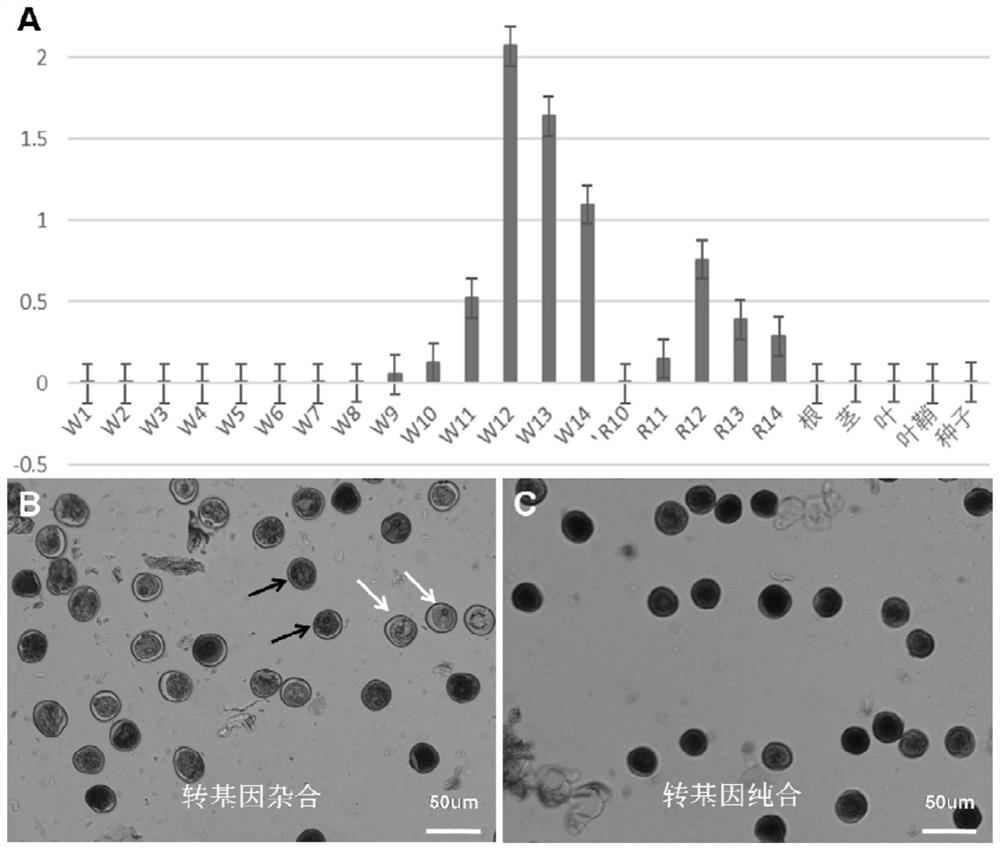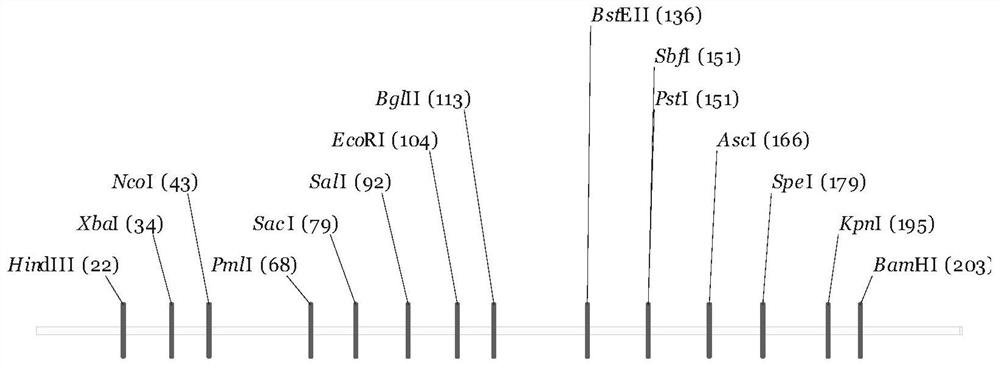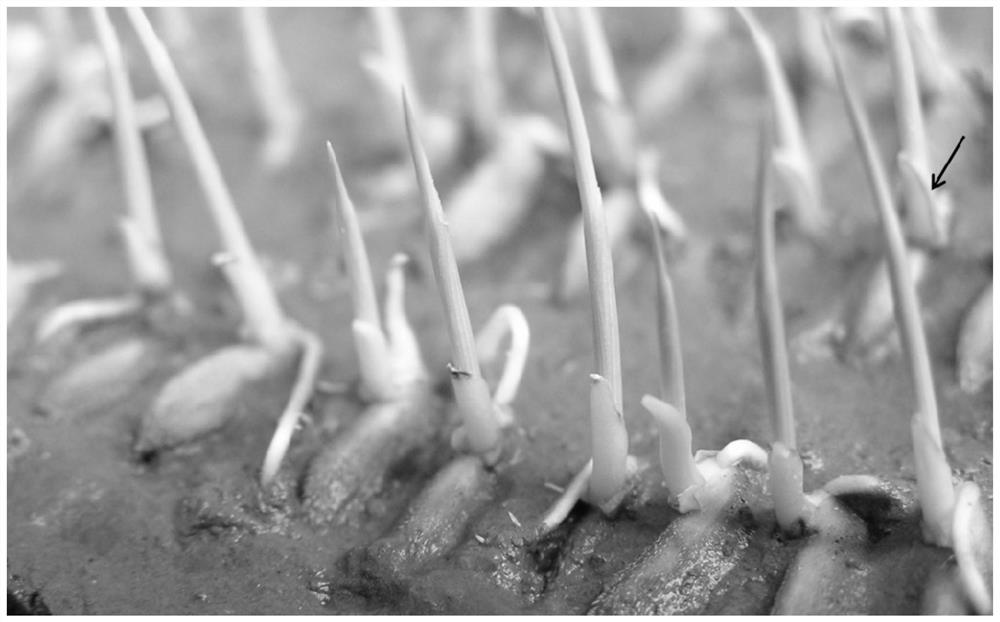Plant pollen-specific expression promoter posptd1 and its application
A plant pollen and promoter technology, applied in the field of genetic engineering, can solve the problem of difficulty in reproducing completely sterile populations, and achieve the effect of blocking pollen-mediated gene drift and reducing exogenous transgenic components
- Summary
- Abstract
- Description
- Claims
- Application Information
AI Technical Summary
Problems solved by technology
Method used
Image
Examples
Embodiment 1
[0033] Embodiment 1, the cloning of rice male gametophyte-specific promoter POsPTD1
[0034] Genes related to male gametophyte development are often expressed in middle and late flower / pollen. In order to find some genes related to gametophyte development, the BAR rice gene expression database (http: / / bar.utoronto.ca / efprice / cgi-bin / efpWeb.cgi) was analyzed, and many genes expressed in the middle and late flowers were found. qPCR verification to select a group of genes that may be related to the development of male gametophytes. Among them, the rice Loc_Os05g40740 gene was specifically highly expressed in late flowers, and its Arabidopsis homologous gene was specifically expressed in pollen. The Loc_Os05g40740 gene was initially listed as a gene related to male gametophyte development, and its promoter was listed as a pollen-specific promoter. Subsequently, the temporal and spatial expression pattern of the gene was analyzed by qPCR. The qPCR primers of the Loc_Os05g40740 gen...
Embodiment 2
[0037] Example 2, Pollen-specific GUS staining identification of the rice pollen-specific promoter POsPTD1
[0038] Transform POsPTD1-GUS into Agrobacterium LBA4404, and then transfect the positive Agrobacterium into Zhonghua 11. GUS staining was carried out on the roots, leaves and flowers of the transgenic positive offspring at the flowering stage. The results showed that the roots, leaves, glumes, filaments and pistils were not stained, while the anthers were stained blue. The anthers were further crushed, and observed under a microscope: only about 50% of the GUS stained pollen of the transgenic heterozygous plant was found, and almost all of the pollen of the homozygous plant could be stained by GUS ( figure 1 ). The above results indicated that the promoter POsPTD1 was indeed a pollen-specific promoter.
Embodiment 3
[0039] Example 3. Preparation and identification of male gametophytic sterility by RNA interference driven by POsPTD1
[0040] In order to determine whether the POsPTD1 promoter can drive the target gene or DNA fragment to destroy pollen fertility, male gametophytic sterile materials were prepared and identified. Taking Loc_Os05g40740 as the object, the POsPTD1 promoter was used to drive the interference fragment of the Loc_Os05g40740 gene, and the creation and identification of male gametophytic sterility were implemented:
[0041] 1. In order to facilitate the loading of relevant target genes or DNA fragments, and in order to accurately and directly identify transgenic positive plants and male gametophyte sterility, we replaced the GUS gene with the modified gene OsMYB76R of rice anthocyanin synthesis-related genes, and modified the vector pCAMBIA1301 The multi-cloning site has been transformed, and the specific operation is as follows:
[0042] (1) OsMYB76 gene modificatio...
PUM
 Login to View More
Login to View More Abstract
Description
Claims
Application Information
 Login to View More
Login to View More - R&D
- Intellectual Property
- Life Sciences
- Materials
- Tech Scout
- Unparalleled Data Quality
- Higher Quality Content
- 60% Fewer Hallucinations
Browse by: Latest US Patents, China's latest patents, Technical Efficacy Thesaurus, Application Domain, Technology Topic, Popular Technical Reports.
© 2025 PatSnap. All rights reserved.Legal|Privacy policy|Modern Slavery Act Transparency Statement|Sitemap|About US| Contact US: help@patsnap.com



